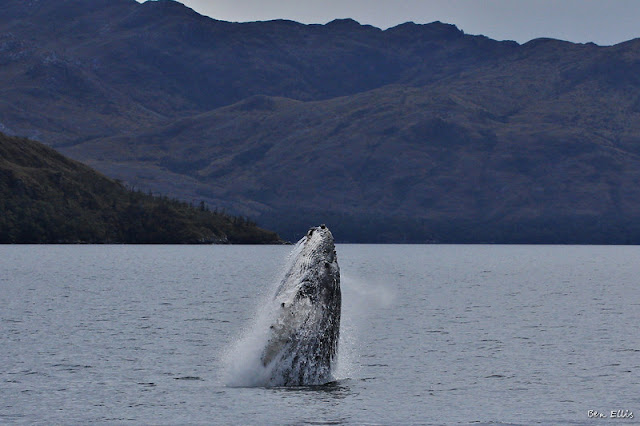 |
| Looking up the valley north of El Chalten |
 |
| Pretty (and prickly) fields of flowers on the way to Fitz Roy |
The
true size of Fitz Roy, like Cerro Torre, seems harder and harder to
judge as you draw closer to it. It is 3,400m and towers over the
rest of the range.
 |
| The weather was starting to change |
By the time we reached Camp Poincenot and set up our tent the clouds had entirely covered the peak. We decided not to hike up to Laguna de los Tres just yet, in the hopes that it would clear later in the evening, or the next morning.
Unfortunately
the weather continued to worsen overnight, the wind roaring through
the trees. The campsite was very sheltered but hard gusts of wind
would occasionally blast the tent, covering everything in a thick
layer of dust. Ben did get up at 5am to see if there was a good
sunrise, but most of the light was diffused by the clouds.
By
7am it had started to rain, so we quickly packed up, had breakfast
and headed back to town for a warm shower and a room inside! It was
our first real experience of the famous Patagonian wind and we were
glad that it was only a short trek back to town.
The
next few days the weather continued stormy so we cleaned all our
trekking gear, and started really thinking about returning home –
only one week left! We were lucky to have some good company - Kim
and Susan from the Whalesound trip were in town at the same hostel –
so we managed to keep ourselves busy.

























































